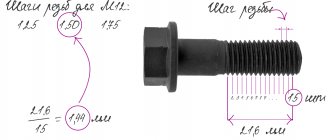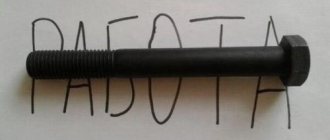Charging methods
- Batteries. These are special devices for charging batteries. They are used to charge alkaline batteries, but salt batteries should never be charged in such a device.
- Connection to the power supply. The battery is connected to the terminals of the power supply, plus to plus, and minus to minus.
- Heating. This method is very simple, but it is considered dangerous, since the battery can simply explode. Most often, hot water is used, which should reach the entire area of the battery.
- Reducing volume. This is an effective method that is used most often. The battery is pressed down with teeth or pliers, which reduces its volume. This method is used only once, after which the battery cannot be used again.
- Boiling in saline solution.
Refilling the battery. The most difficult method, which only a true expert can do.
Knowing how to properly charge batteries, you can significantly extend their life and reuse them in any necessary device.
Danger of charging batteries
The batteries contain caustic alkali. When charging, when electric current passes through it, the battery may explode. This must be taken into account when charging in a room, garage or other enclosed space.
What can happen when charging batteries.
Another nuisance that may arise during the charging process is electrolyte leakage. If a small amount of the substance comes into contact with the device, it will be damaged.
When purchasing galvanic cells, you need to take into account that only alkaline (alkaline) cells can be recharged. It is impossible to extend the service life of salt products. Recharging them is considered dangerous. They may explode, causing electrolyte to splash into your eyes.
Battery life
Battery life depends on the load; it is important to know how much energy a household appliance consumes per hour.
- The load is measured in mAh, for example, if the device consumes 20 mAh per hour,
- And the battery reserve is 2000 mAh, then 200 mAh is consumed in 10 hours.
- This means that at this consumption the battery will last for 100 hours of operation.
History of chargers
The discovery of galvanic electricity led to the creation of the first prototype of rechargeable batteries. In 1798, Italian physicist Alessandro Volta conducted an experiment involving placing copper and zinc plates connected in series in an acid solution. He discovered that when current was passed through the plates after it was interrupted, a residual charge remained on them. Subsequently, Gotero, Marianini, and Becquerel became interested in these experiments. But it was not until 1859 that Plante created the truly first battery.
His experiment was based on strips of lead with a piece of cloth sandwiched between them. He then rolled the strips and immersed them in acidified water. By applying and removing current, he received a potential difference across them, that is, the accumulation of capacitance by the element. Further development led to the fact that when the plates were coated with lead oxides, the formation of the active layer improved.
In 1896, the American company National Carbon Company (NCC) was the first in the world to begin producing batteries. Today it is known as Energizer. Early in 1901, scientist Thomas Edison patented a nickel-cadmium type of battery. At the same time, Waldmar Jungner was developing a nickel-iron type called an alkaline battery. Alkaline batteries are used in transport and power plants. In parallel with the development of batteries, charge recovery technologies are also developing.
Battery classification
Batteries differ from each other in their shape and type of chemical reaction.
Batteries may have the following form:
- Cylindrical shape. These are the well-known AA batteries, which are the most popular.
- Barrel. They have a large power reserve.
- Rectangular batteries, they are also called crown batteries.
- Disc form - tablets.
The most powerful of these batteries is the crown, which has a voltage of 9 volts.
As for the type of chemical reaction, the following types are distinguished:
- Salt battery. The power of such a battery is minimal.
- Alkaline, more powerful battery.
- Lithium. Copes with high loads.
Method 4: Volume reduction
The method is quite incomprehensible and exotic at first glance. We need to reduce the size of the battery so that the charge in it is restored on its own.
What should you do for this? Mechanically reduce and make the body volume thinner. To do this, the battery is hit against something hard - asphalt, wall, stone, brick, etc. Or they simply trample on it with thick shoes. You can try to flatten it with a handy tool - for example, pliers.
This method will charge all AA batteries. It must be said that such a “barbaric” method helps restore the charge in some cases even to 100%!
Battery for recharging
The battery is only used to recharge alkaline batteries. The device has four compartments; batteries are inserted into three of them, and the battery itself is inserted into the fourth.
It is important to know how long to charge the battery; it usually lasts between five and ten minutes.
After this, you can use the batteries again, but their life will be short. It is best to take a battery with a charge indicator, which is most convenient to use.
- It is best to choose a battery with multiple battery compartments;
- The charger should turn off automatically;
- The greater the power of the device, the better;
- The charger must have a built-in indicator and display;
The cheapest devices are not recommended for use, as they have a short service life and can ruin a good battery. More expensive options are of good quality and are more worth the purchase.
DIY powerbank
Top
- To make a USB charger we will need:
- USB extension cable (any length, even 5-10 cm),
- cartridge for 4 AA batteries (bought on the market),
- diode (taken from a dead power supply),
- soldering iron, some flux and solder (for 30 minutes),
- multimeter (for 30 minutes),
- sealant or thick glue.
Manufacturing principle.
From the USB extension cable we leave only a socket with wires. It needs to be attached (for example, glued) to the cartridge body, and the wires coming from the contacts of the USB socket must be soldered to the pads and cartridge
respectively.
- Cartridge for 4 AA batteries:
In a correct USB cable, the contacts and are located at the edges of the connector, as indicated in the diagram. Usually there is a red wire coming from the contact, and a black wire coming from it. But to check, it doesn’t hurt to put the cut-off plug into the computer and measure the potentials with a multimeter. This option
the most reliable, because the Chinese sometimes screw this up...
To prevent reverse current, when charging occurs not in the forward direction, but in the opposite direction, we place a diode in the gap of one of the wires.
It is not required, but there are also devices that can remove 5 Volts from the charger connector (for example, some models of old Sony Ericsson).
In this case, if the cartridge contains dead batteries or accumulators, physics will try to equalize the potentials on the cartridge and the phone terminals. For
In such cases, a diode is needed.
To increase the strength of the connection, I wound the socket to the cartridge with steel wire, and filled the wires, diode and gaps with hot glue. This way, dirt will not get clogged, and the wires will not accidentally get caught on any protruding objects - after all, the operating conditions of the universal charger require placement on branches, backpacks, in tents and kayaks, etc. IN
The result was a completely independent device.
For example, let's connect a phone and a player to the cartridge. During the trip, we tested 2 players from different manufacturers. First, Ni-MH batteries were installed in the cartridge, and after they were depleted, a set of alkaline batteries was installed.
batteries.
Let me remind you that the self-discharge of Ni-MH batteries is about 5-8% per day. That’s why they should be used first. The batteries do not have significant self-discharge, and therefore can be used until the expiration date.
As for charging players that have a battery life of about 5-10 hours, the Acorp, shown in the photo, was successfully charged 5-6 times. The first two charges up to 100%. Then a little more than 70% capacity. And the last two charges gave just over 50% capacity.
The charging quality was assessed in comparison with the battery life when charging from
mains charger.
Why do the second and subsequent charges not reach 100% capacity? At first, the voltage from four batteries is 6 Volts (or 4.8 Volts for Ni-MH batteries).
Then the voltage on the cartridge drops, and it is no longer possible to charge the Li-ion or Li-Pol battery to 4200 mV.
But until the charge of the batteries or batteries in the cartridge is depleted, charging will continue until the battery potential of the device being charged
and cartridge will match.
With the phones, we managed to make three charges at 100%, 70-80% and 50-60%, respectively. But here the battery capacity is many times greater than that of players.
So everything is natural.
Batteries for charger
Not all batteries can be charged in a charger. Batteries that can be recharged many times are called rechargeable batteries.
On their body there is the inscription “rechargeable battery”; such batteries are more expensive than conventional options. Typically, rechargeable batteries take eight to twelve hours to charge.
Today you can find many types of battery chargers. They are used to recharge batteries of various shapes, but charging must be used carefully; the batteries must not be allowed to overheat.
Of course, recharging batteries is considered the safest. Detailed instructions for charging batteries should be included with the charger.
Types of "frogs"
Today, universal chargers called “frog” chargers are commercially available. By design they can be divided into three large groups.
- Standard models. Receive power from AC mains. In Europe and Russia, devices that can withstand a voltage of 220V are used, in America - 110V.
- Automotive devices. Instead of a power plug, they are equipped with a connector for the cigarette lighter socket, and are powered from the vehicle’s on-board network.
- USB devices. They are equipped with a special socket and are used when the phone interface does not provide a USB port. In this case, the battery is inserted into a “toad”, which is connected to a computer or laptop via a cord.
Based on the type of functionality, chargers are divided into two categories:
- automatic – capable of changing the polarity of the battery independently;
- semi-automatic - charging requires connecting the battery to the terminals manually.
The vast majority of models are equipped with information displays or indicator lights, as well as additional connectors to expand the functionality of the device.
Salt and alkaline batteries: differences
- It is important to remember that salt batteries are not charged in a charger. If you do not use the battery for a long time, it will be completely discharged in a couple of years. Salt batteries are very susceptible to temperature changes, they have a small capacity and a short service life. These batteries cannot withstand high loads.
- Alkaline batteries have better performance. They are not sensitive to temperatures, work much longer, have a large capacity and are suitable for recharging in a charger.
According to the rules, only rechargeable batteries can be charged in the charger, but if you maintain an interval of five to ten minutes, you can charge a regular alkaline battery in the same way. It is important to remember not to increase the charging time, as the battery may explode.
Precautionary measures
Compliance with basic precautions will allow you to avoid many negative consequences when conducting experiments aimed at restoring non-rechargeable button-type batteries.
If there is a need to recharge an old battery, you should protect your eyes from possible contact with chemically active substances and metal debris in the event of a battery rupture.
In addition to using personal protective equipment, it is necessary to prepare fire extinguishing means in advance. If the lithium battery becomes depressurized during charging, it may catch fire.
If you are charging a rechargeable coin battery, then there is no need to worry. Modern chargers are equipped with a “smart” system that uniformly supplies electric current to the battery contacts.
After reaching the required charge level, the automation will also work and the current supply will stop. The main thing when using such devices is to monitor the functionality of the sockets and wiring in the house or apartment. Despite the low current consumption, the presence of poor contact in the electrical fittings can lead to melting of the contacts.
Charging AA batteries
There are many different ways to charge batteries that are used at home. But not all of them are safe, so you should treat them with caution.
- Traditional methods can work, but it is best to turn to them in the most necessary cases.
- After charging, a regular battery does not last long, this time is enough to purchase new batteries.
- If you charge an alkaline battery in a charger, you should never allow it to overheat.
Knowing how to charge a battery makes it easy to get them working again and use the batteries again before they run out again.
Only rechargeable batteries are suitable for repeated charging, so it is best not to risk your health and immediately buy only those batteries that are safe to charge. Lithium batteries should not be charged; they will explode under physical stress and can cause serious injury.
Which batteries can be charged and which cannot?
As we found out, there are a great many types and types of batteries. Which ones can be charged via a charger and which ones cannot?
The answer is simple. You can only charge batteries - it will not be possible to restore energy in a discharged galvanic cell. That is, you cannot charge alkaline, salt, lithium and silver-zinc galvanic cells, which, in fact, are disposable.
Expert opinion
Alexey Bartosh
Specialist in repair and maintenance of electrical equipment and industrial electronics.
Ask a Question
Healthy. Many people, even after reading this paragraph, will still have the question of whether it is possible to charge an alkaline battery. As we defined above, an Alkaline battery is an alkaline galvanic cell, which means it cannot be charged.
What happens if you charge regular batteries?
Now let's find out why you can't charge disposable batteries. First of all, it's useless. During manufacture, the galvanic cell is “charged” with chemicals, which are destroyed during battery operation, forming complex chemical compounds. When the initial substances are completely used up, the battery stops delivering current. It is impossible to restore the original substances from the resulting compounds. The item will have to be thrown away.
Charging galvanic cells is not only useless, but also dangerous. If you force a battery to do something for which it is not intended, for example, forcefully “fill” voltage into it, then the cell may lose its seal and “leak,” flooding everything with electrolyte. But this is also a lesser evil. It’s much worse when, when trying to charge, the battery overheats and explodes. Here it’s not far from an injury, and a stone’s throw from a fire. Thus, under no circumstances should you charge a completely discharged galvanic cell.
But it is not all that bad. Yes, a disposable battery cannot be restored, but it can be recharged without waiting for it to completely discharge. By recharging periodically, it is quite possible to extend the life of the galvanic cell by double or even triple.
Where does the extra energy come from in a battery whose chemical reactions are irreversible? The fact is that during the operation of the galvanic cell, the starting materials are not fully used. Even a completely discharged battery still has a lot of untapped potential. If the battery is completely dead, it will not be possible to revive it. But if the element is periodically “shake” with small charging currents, then it will use up the components more fully and will be able to last longer.
Important! Even recharging a galvanic cell may carry a certain danger of an explosion or fire. Therefore, if we nevertheless decide to do this, we must clearly understand that we are doing this at our own peril and risk.
Photos of the best battery manufacturers
Share with friends
Charge your phone without using a charger
Most owners of mobile gadgets have no idea that, in some stores and outlets for other services, chargers are also on sale. In addition, there are terminals where you can charge your mobile phone. It’s a pity, but in our country, they are still available in two capitals and other large cities. But, if you find them, feel free to charge your phones!
Unfortunately, such charging costs money. On average, 50 rubles per hour. If you are walking along the central square and there is a store of your operator nearby, you can contact him with such a request. You should not be refused, since such a service is part of the service provided to subscribers of your network.
But, for the most part, there will be no such service. In this case, let's try to charge the phone without a charger. You can simply use the Air function. In this situation, you can fully charge your smartphone after an hour. If this option does not suit you, then you can recharge your smartphone a little if you turn off the Internet and the GPS network. Only your card should work. However, programs need to be disabled.
Is it possible to extend the service life
Ordinary salt-type batteries do not function very well in cold and heat. Therefore, it is better not to use them in such weather conditions. The electrolyte inside is converted to gas or freezes, which has a detrimental effect on its conductivity.
A discharged battery will work for a little longer if its body is lightly pressed with pliers . But this must be done as carefully as possible to prevent damage.
Reagents often clump into small lumps, which prevent the reaction from proceeding stably inside the battery . To make the process easier, you can tap the AA battery on some durable surface. This will add about 6-7 percent power to the element.
You should also pay attention to the fact that alkaline devices tend to self-discharge. Therefore, when purchasing, you should take into account the date of manufacture . Old elements will quickly become unusable.
To achieve maximum battery life , do not install different types in one device. The same applies to installing new elements to old ones. It is better to always have an extra set in stock. When one loses its charge, it can be quickly and easily replaced. In this case, you will not need to think about whether the batteries can be charged.
Popular manufacturers and their features
The most popular manufacturers of AAA batteries are:
- Panasonic Eneloop Lite (Japanese manufacturer): cost 210-220 rubles. Recharge time up to 3000. Capacity 550 mAh;
- Panasonic Eneloop Pro capacity 950 mAh, price 300-320 rub. Recharge 500.
- Robiton AAA micro (Russian manufacturer): price 90-100 rubles. Capacity 900 mAh.
- Varta (German manufacturer): capacity 1000 mAh, recharge 1500, price 170-180 rubles.
- GP (Hong Kong manufacturer): capacity from 650 to 1000 mAh, price 85-150 rubles, recharge: 1000.
- Duracell (American manufacturer): price 200 rubles, capacity 800 mAh, recharge 1000.
- Camelion capacity 800 mAh, price 180-200 rubles, recharge 1000.
Devices for charging batteries at home
Let's consider possible methods for restoring the performance of a car battery at home.
- Battery heating. This method can help in the situation of parking a vehicle in the cold season. When the battery cools, the electrolyte density drops below critical values (less than 1.28 grams per cubic centimeter). Density is measured with a hydrometer. Previously, such a device was in the repair kit of almost every car enthusiast. Now it is used only at specialized service stations. In addition, maintenance-free batteries technically do not allow density measurements.
If the car does not start after being parked in winter, you should not force the battery too much by starting it before it is completely discharged. You can try removing the terminals, dismantling the battery, bringing it into the house, installing it close to heating devices (batteries, ventilation, stove). Considering the large mass of the battery, it will heat up in no less than a couple of hours. It is better to leave the battery at home overnight.
After heating the battery, the density of the electrolyte increases. This increases the capacity of the battery. There may be enough charge to start the engine.
- Use of non-standard chargers, power supplies for household, computer and mobile equipment. In everyday life, devices are often used that are recharged or powered from power supplies or chargers.
The output voltage of chargers for mobile equipment (smartphones, tablets) usually does not exceed 7 Volts. In addition, connecting the battery to the mini-USB connector is problematic. This option should be excluded.
The most acceptable option is to use a power supply for a laptop. Now it is in almost every home. The voltage at the output of the laptop (netbook) power supply is usually about 19 Volts. There is usually a sticker on the device case with information on the rated voltage and maximum load current of the power supply. In addition, there is a diagram of the connector polarity. Typically, positive power is supplied through the central contact of the connector, and negative power is supplied through the tubular contact. To be sure, you should study the diagram on the sticker (nameplate) in more detail.
You cannot connect the laptop power supply directly to the battery, since the charging current will exceed the maximum load current. Negative contact of the connector using a wire with a cross-section of 0.75 sq. mm. should be connected to the negative terminal of the battery. The positive contact is connected through an additional shunt (current-limiting resistance). You can use a car's interior or side light bulb as a shunt.
In the video you can see how to correctly assemble such a circuit:
The charge current in this case will be small (no more than 1 Ampere). It will take more than 50 hours to fully charge a 50 Amp-hour battery. To start the engine, 10 (sometimes 3-4) hours of charge is enough.
You can also use the inkjet printer's power supply, if available, as a non-standard charger.
Charge using household incandescent lamps and electric stoves. This charging method is the most extreme
Without taking precautions and without electrical skills, this charging method cannot be used.
When charging using household incandescent lamps, lamps with a power of 60 watts or more are used. Do not use LED or fluorescent energy-saving lamps. To connect to the battery, a circuit consisting of a lamp and a high-power rectifier diode is installed. Such a diode can be found in a fluorescent energy-saving lamp. To connect to a household electrical network, use a plug (connector to the network) from any unnecessary household electrical appliance.
The electrical circuit includes: plug wire contact - diode cathode (indicated on the diode body) - diode anode - battery negative terminal - battery positive terminal - incandescent lamp contact - other incandescent lamp contact - other plug wire contact. After installing the circuit, observing emergency protective measures, connect the plug to the household network.
The charging current in this case is also low; it will take at least 5 hours to partially charge the battery.
Let us remind you once again: the use of this charging method is possible only in emergency situations.
How to know if you can recharge
The battery differs from an ordinary battery in capacity - mAh. Often the manufacturer makes this inscription in large letters. The higher this indicator, the longer the battery will last.
If upon purchase you see the inscription “do not recharge”, then the element cannot be recharged . Another difference is the cost. Battery devices cost much more than conventional energy cells. Moreover, the cost is formed from recharging and power cycles.
It is noteworthy that folk craftsmen have learned to charge ordinary devices. They came up with a lot of ways to do this.
AAA Nickel Metal Hydride Battery
Nickel-metal hydride AAA batteries are labeled NiMh. By design they are analogous to NiCd. Rated voltage 1.2 V.
Over a month, the battery loses capacity by 20-30%, and then by 3-7% per month. Average service life is from 3 to 5 years.
The difference between NiMh and NiCd is the increase in specific energy parameters. Also, the advantages of this type of battery include:
- cleaner production;
- they do not have a “memory effect”;
- more simplified disposal in case of failure.
Microprocessor charger: charging with brains
Devices with a microprocessor are more expensive, which is why they are most often used by those who need batteries for their occupation. For example, photographers. But the prices are by no means astronomical, so nothing prevents you from making a choice in favor of a smart charger. How is it usually better?
- Has settings . You can independently set the optimal current for a specific battery.
- Has independent channels . You can charge only one battery, or you can have a battery with a capacity of 1600 mAh in one slot, and a battery with a capacity of 1600 mAh in the other, and both will be charged 100%.
- Has foolproof and overheating protection . They simply won't turn on until you place the batteries in the correct way and will turn off if the battery gets too hot.
- Has special modes . For example, “Training” - successive cycles of charging and discharging the battery in order to restore its capacity.
- Has a display . You see all the information about the accumulated capacity, voltage, current...
Lithium-ion battery AAA (Li-ion)
The voltage of the Li-Ion little finger battery is 3.7v. The capacity, depending on the manufacturer, will be from 350 to 1100 mAh. Every year more and more powerful power sources appear. The battery consists of two electrodes. On one side there is a negative cathode in the form of a flat area, on the other side there is a positively charged anode in the form of a pimple. Between them there is an electrolyte sealed in an airtight form.
Positive lithium ions are the source of current. They interact with other chemical elements to produce a chemical reaction that powers a device.
To prevent accidental fire of the lithium battery when charging it, a battery charge controller is mounted in the case.
Compared to other power sources, ion batteries have better characteristics:
- low level of self-discharge allows them to be used for a longer time;
- increased capacity ensures long operation;
- do not require additional maintenance.
Lithium-ion batteries cannot be completely discharged; they must have at least a minimum charge. Otherwise, it will lead to a short period of use.
Also, you should not buy a li-ion battery for future use, since in 2 years it loses 4% of its capacity.
Types and characteristics of AAA batteries
Rechargeable batteries vary in size and shape. One of the most popular are “little finger ones”, which are denoted by the English letters AAA. Their length is 44 mm and diameter is 10 mm. They are slightly smaller than AA AA batteries, with a length of 50 mm and a diameter of 14 mm. Weight approximately 12 g.
According to the chemical composition of AAA batteries, there are: lithium-ion, nickel-cadmium and nickel-metal hydride.











